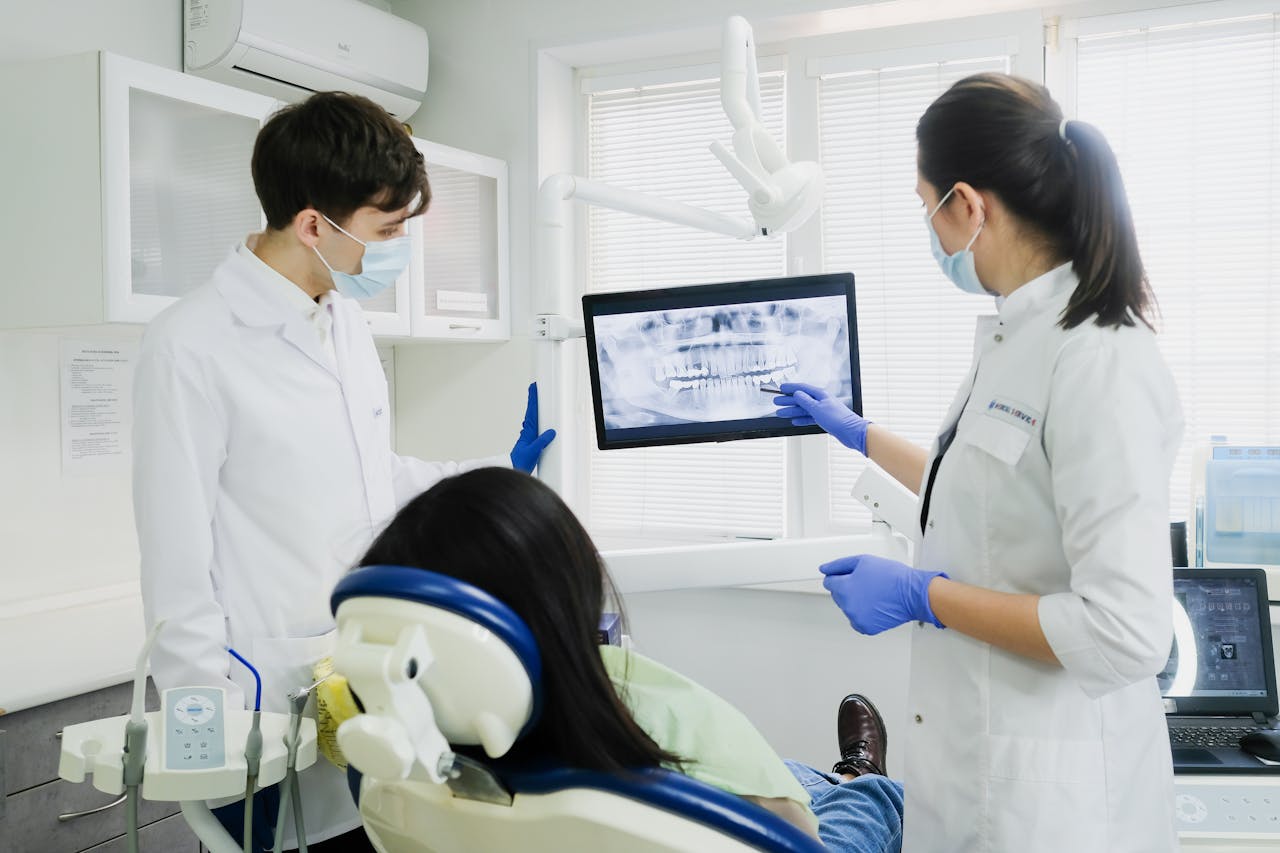30 Patient Appointment Booking Statistics – Digital Transformation and ROI Metrics for Healthcare Practices in 2024-2025

Comprehensive data compiled from extensive research across healthcare technology adoption, patient preferences, and operational efficiency metrics
Key Takeaways
- Technology adoption gap creates massive opportunity - While 67% of patients prefer online booking, only 11% of medical groups report a majority digital adoption.
- Financial returns justify investment - Healthcare practices implementing online scheduling report improved revenue, though returns vary significantly by practice size, specialty, and implementation approach.
- Mobile dominates traffic, but desktop converts better - Mobile generates the majority of appointments with 7x more traffic, yet desktop users convert 22% better, highlighting optimization opportunities.
- No-show reduction drives bottom-line impact - Text reminders reduce no-shows by 38%, with the U.S. healthcare system losing an estimated $150 billion annually to missed appointments.
- Generational divide requires a multi-channel approach - Millennials account for 47% of online bookings, while only 7-8% of patients 59+ choose virtual visits, necessitating diverse booking options.
- Wait times reach crisis levels - Average specialist waits hit 31 days in 2025, up 48% since 2004, with some locations facing 291-day waits for dermatology.
- Reviews determine provider selection - 94% consult online reviews before booking, with providers having 100+ reviews seeing 27x more appointments than those with fewer than 10
- AI and automation transform economics - Healthcare organizations implementing AI report 15-40% cost reductions.
Technology Adoption & Market Growth
- Only 11% of medical group leaders report majority of patients use digital scheduling tools. MGMA research reveals this striking implementation gap despite clear patient preferences. While 67% of patients prefer online scheduling versus only 22% choosing phone, the reality shows massive adoption barriers. This paradox represents both the industry's greatest challenge and opportunity, as organizations that bridge this gap capture significant competitive advantage through improved patient satisfaction and operational efficiency.
- The medical scheduling software market reached $355.09 million in 2024, projected to hit $749.9 million by 2030. Grand View Research confirms a 13.3% compound annual growth rate driven by AI integration and consumer demand. North America dominates with 42.8% market share, while Asia Pacific shows the fastest growth at 15.3% CAGR. This explosive growth reflects healthcare's digital transformation acceleration and recognition of scheduling technology's critical role in operational success.
- 73% of medical practices report 25% or fewer patients using self-scheduling. Despite clear demand, MGMA data shows implementation severely lags patient preferences. Small practices face budget constraints while large systems struggle with legacy infrastructure. This adoption gap costs practices millions in lost revenue and efficiency, with early adopters gaining substantial market advantage through improved access and reduced administrative burden.
- Epic Systems maintains enterprise dominance for the 14th consecutive year, while athenahealth leads physician practices. 2025 KLAS rankings show Epic MyChart scoring 90.2 and serving 305+ million patients globally. Enterprise EHR pricing varies widely based on deployment model, practice size, modules selected, and support requirements. Market consolidation continues as smaller vendors struggle to compete with comprehensive platforms offering integrated scheduling, EHR, and billing capabilities.
- 15% of medical groups use predictive analytics for scheduling optimization. This low adoption rate indicates a substantial opportunity for competitive differentiation through advanced technology. Organizations implementing predictive analytics report 20-30% improvements in appointment utilization and a 15% reduction in wait times. Machine learning algorithms optimize slot allocation, predict no-show likelihood, and automate overbooking decisions, creating measurable operational improvements.
Patient Preferences & Demographics
- 67% of patients prefer online booking versus 22% preferring phone scheduling. Multiple studies confirm this overwhelming digital preference, yet implementation gaps persist. Patients cite convenience, 24/7 availability, and elimination of hold times as primary drivers. The preference spans all age groups except 65+, with younger demographics showing even stronger digital preferences. Organizations ignoring these preferences risk patient defection to more digitally-enabled competitors.
- Millennials account for 47% of all online healthcare bookings, while Gen Z represents 22%. Demographic analysis reveals stark generational differences in booking behaviors. Only 7-8% of patients aged 59+ choose virtual visits, with awareness of online booking dropping to 25.89% for patients 85 and older. These patterns require multi-generational strategies balancing digital innovation with traditional access methods for older populations.
- 42% of appointments are scheduled outside standard business hours. Booking pattern analysis shows Sunday evenings from 4:00-8:00 PM as the most popular booking window. This after-hours demand highlights the critical importance of 24/7 digital access. Organizations limiting booking to business hours miss nearly half of potential appointment requests, directly impacting revenue and patient satisfaction.
- 82% of patients use mobile devices for appointment booking, yet desktop converts 22% better. Platform analytics reveal this mobile-desktop paradox. Mobile generates the majority of healthcare appointments with 7x more traffic than desktop, but conversion rate gaps suggest significant mobile user experience issues. AI-powered communication systems that optimize for both mobile and desktop interfaces could yield substantial appointment volume increases given traffic dominance.
- 65% of electronic bookings are made by women who show distinct booking preferences. Zocdoc data reveals women prefer morning appointments at 11 AM while men favor 1 PM slots. Women also make 80% of family healthcare decisions, influencing provider selection for spouses and children. Marketing and scheduling strategies must account for these gender-based preferences to optimize appointment fill rates.
Financial Impact & ROI
- Healthcare practices implementing online scheduling report revenue improvements, though results vary significantly by practice characteristics. Some organizations document substantial gains, with industry reports indicating revenue increases can range from modest single-digit improvements to more significant gains depending on baseline performance, specialty, and implementation quality. Returns stem from reduced no-shows, improved appointment density, and decreased administrative costs, with many organizations reporting positive ROI within 6-12 months.
- No-show rates cost the US healthcare system an estimated $150 billion annually. Average rates range from 5-7% in well-managed practices but can reach 30% without effective reminder systems. Healthcare Innovation research confirms this substantial economic burden. While reducing no-shows improves revenue, actual savings depend on factors like the ability to fill freed slots, payer mix, and specialty reimbursement rates.
- Healthcare organizations save $150,000 annually through no-show reduction programs. Industry analysis demonstrates how improvements in scheduling efficiency create financial impact. Online booking systems that capture after-hours demand and reduce no-shows can achieve significant savings, though results vary by practice volume and specialty. For specialists with higher reimbursements, the impact may be substantially greater.
- Healthcare organizations report 38% workforce productivity improvements through automation. Current inefficiencies cost $16.3 billion annually in unnecessary administrative expenses. Organizations implementing comprehensive automation report 5-10% annual revenue increases while reducing operational costs through improved efficiency.
- West Tennessee Healthcare achieved 4x ROI in 100 days through AI-powered surgical scheduling. The system added 61 surgical cases, recovering 90% of the technology investment almost immediately. AI optimization of OR scheduling improves block utilization from 68% to 89% while reducing turnover time by 23 minutes on average.
Conversion & Performance Metrics
- Healthcare websites show 5.1% median conversion rates, with the wellness subcategory performing the highest at 8.2%. Unbounce research reveals significant variation across specialties. Dentistry and psychiatry lead with 3.0% visitor-to-patient conversion, while dermatology lags at 1.8%. Once prospects engage, rates jump dramatically - psychiatry achieves 75.6% prospect-to-patient conversion, demonstrating the value of initial engagement.
- Desktop converts 22% better than mobile for healthcare appointments. This performance gap creates optimization opportunities. Mobile receives 7x more traffic than desktop, suggesting that improving mobile conversion rates could dramatically increase appointment volumes. The disparity likely reflects mobile user experience issues, including form complexity, page load speeds, and navigation challenges.
- Call abandonment rates average 7% in healthcare, with 60% abandoning after one minute. Call center analytics show 67% abandonment after two minutes. Each abandoned call represents approximately $200 in lost appointment revenue. High-volume centers handling 2,000 daily calls lose potential revenue from abandonment alone, justifying investment in digital alternatives.
- 72% prefer online booking, but only 10% complete appointments digitally. This dramatic preference-action gap indicates significant user experience friction. Patients cite complex forms, limited availability, visibility, and insurance verification issues as primary barriers. Organizations that simplify digital booking processes capture this latent demand, with some reporting 47% increases in digitally booked appointments after optimization.
- Email marketing outperforms paid channels by 2x for appointment conversion. Marketing analytics show email achieving superior results through existing patient relationships. Google Ads delivers 4.7% median conversion rates, while Instagram surprisingly leads social media at 7.7%. Video marketing struggles at 1.1% visitor conversion, while direct mail performs worst at 0.3%, clearly indicating channel preferences. Healthcare AI platforms can leverage these insights to automatically prioritize high-performing channels for patient outreach.
Operational Efficiency
- Healthcare call centers handle 2,000 calls daily, with 20% going unanswered. Industry analysis reveals systemic capacity issues. Average hold times of 4.4 minutes far exceed the 50-second target, with only 52% of issues resolved on first contact versus 70-79% industry standard. These inefficiencies drive patient frustration and defection while increasing operational costs through repeat calls and escalations.
- Text message reminders reduce no-shows by 38% compared to voice calls. Clinical studies demonstrate SMS superiority across all demographics. Two-way messaging platforms allowing confirmations and rescheduling reduce no-shows by 34% while projecting $100,000 in additional annual revenue. Optimal timing places initial reminders 7 days before appointments with follow-ups 24-48 hours prior.
- Self-scheduling reduces no-shows by 29% and saves 4 minutes of staff time per appointment. Despite these benefits, MGMA reports that 73% of practices have 25% or fewer patients using digital tools. Every 100 self-scheduled appointments saves one FTE position. Practices need only 6 daily self-scheduled appointments to break even on platform costs, with most achieving 5-10% annual revenue increases.
- 58% of practices maintain consistent no-show rates compared to 2023, despite technology investments. MGMA data shows 42% now implement no-show fees ranging $25-50. Standard policies require 24-48 hours' advance notice, though surgical specialties demand one week's notice. However, 56% of patients prefer providers without cancellation penalties, creating retention challenges.
Patient Experience & Retention
- 94% of healthcare patients consult online reviews before booking appointments. Providers rated below 4 stars lose 84% of potential patients, while those with 50+ reviews receive 10x more bookings than those with fewer than 10. Providers with 100+ reviews see a 27x increase in appointments. Healthcare professionals with 23+ surveys receive 9.4x more profile visits and 9.7x more appointment requests, making reputation management critical.
- 5% increase in patient retention rates boosts profits by 25-95%. Every 1% improvement in retention leads to 4% increase in projected lifetime value. However, retention statistics show average rates remain low at 41% for dental practices and 43% over five years for new patients. Physicians lose 50% of their patient database over five years, with new patients showing only a 5-20% likelihood of scheduling second visits.
- 94.3% overall satisfaction reported with web-based appointment systems. A comprehensive Saudi Arabian study demonstrates strong acceptance when properly implemented. UK data shows 49.7% find phone booking "easy" while 47.9% rate online booking similarly, with 89.9% reporting needs were met. Patient satisfaction directly correlates with booking ease, with difficult experiences driving 28% lower return rates for chronic conditions.
Wait Times & Access Challenges
- Average specialist wait times reach 31 days in 2025, up 19% from 2022 and 48% from 2004. Merritt Hawkins research shows obstetrics/gynecology leading at 42 days, followed by gastroenterology at 40 days. Geographic variations are extreme, with Boston averaging 65 days versus Atlanta's 12 days. Some patients face 291-day waits for Portland dermatology, creating access crises.
- Primary care wait times improved to 20.6 days, down 30% from 2017 levels. AMN Healthcare data shows family medicine outperforming other specialties. However, 96% of urgent care appointments occur within 8 days, highlighting primary care access issues. Open access scheduling models maintaining 65-75% same-day slots show promise, improving continuity from 47% to 62%.
- Healthcare organizations implementing AI report 15-40% cost reductions with predictive models, saving significant operational costs. Industry projections show 29% of leaders are currently investing in generative AI, with 56% planning investment within three years. AI-powered scheduling optimization reduces wait times by 15%, improves slot utilization by 20-30%, and automates complex scheduling decisions that previously required manual intervention.
Frequently Asked Questions
Q: What's the real ROI timeline for implementing online appointment scheduling? Most healthcare practices see positive returns within 6-12 months, though results vary significantly based on practice size, specialty, baseline performance, and implementation quality. Small practices typically invest $450-1,500 monthly and recover costs through reduced no-shows and increased appointment volume. Enterprise system implementations require substantial upfront investment but can achieve positive ROI within 18-24 months through comprehensive efficiency gains.
Q: How significant is the mobile optimization opportunity? With mobile generating the majority of appointments but converting 22% worse than desktop, the opportunity is massive. Simple improvements like reducing form fields, implementing auto-fill, and optimizing page load speeds can increase mobile conversions by 30-50%. Given the mobile's 7x traffic advantage, even modest conversion improvements yield substantial appointment increases.
Q: What's driving the disconnect between patient preferences and actual booking methods? The 67% preference for online booking versus actual implementation reflects multiple factors: limited provider adoption (only 26% of dental practices offer online booking), poor user experiences causing abandonment, insurance verification complexity, and generational divides with older patients preferring traditional methods. Successful organizations address all these factors simultaneously.
Q: How do text reminders compare to other communication methods? Text messages achieve 38% no-show reduction compared to 15-20% for voice calls and 25-30% for emails. SMS has 98% open rates within 3 minutes versus 20% email open rates. Two-way texting, allowing responses, performs even better, reducing no-shows by 34% while improving patient satisfaction through convenient rescheduling options.
Q: What's the impact of online reviews on appointment volume? The impact is dramatic - providers with fewer than 10 reviews see 27x fewer appointments than those with 100+ reviews. Since 94% of patients check reviews before booking and 84% won't consider providers below 4 stars, reputation management directly drives appointment volume. Each additional star rating can increase bookings by 5-9%.
Q: How critical is after-hours booking capability? With 42% of appointments scheduled outside business hours and Sunday evenings being peak booking time, after-hours capability is essential. Organizations limiting booking to business hours miss nearly half of potential appointments. Digital scheduling providing 24/7 access captures this demand, with some practices reporting 30% appointment increases from after-hours bookings alone.
Q: What are the most effective strategies for reducing no-shows? Multi-modal approaches work best: automated text reminders (38% reduction), two-way messaging for confirmations (34% reduction), self-scheduling (29% reduction), and charging no-show fees (behavior modification). Optimal timing sends initial reminders 7 days out with follow-ups 24-48 hours prior. Combining all strategies can reduce no-shows from 20% to under 5%.
Sources Used
- Grand View Research - Medical Scheduling Software Market Analysis
- MGMA - Patient Self-Scheduling Statistics
- Signpost - Online Appointment Scheduling Stats 2024
- Zippia - Appointment Scheduling Statistics
- Medical Economics - Healthcare Trends 2024
- Invoca - Healthcare Marketing Statistics
- Dialog Health - Patient Retention Statistics
- Klara - Text Reminder Effectiveness Study
- AMN Healthcare - Physician Wait Time Survey
- Unbounce - Healthcare Conversion Benchmarks
- PubMed Central - Web-Based Appointment System Satisfaction
- Healthcare Innovation - No-Show Cost Analysis
- Zocdoc - Patient Preference Data
- Curogram - No-Show Financial Impact
- Pragmatic Coders - Healthcare Automation Trends








